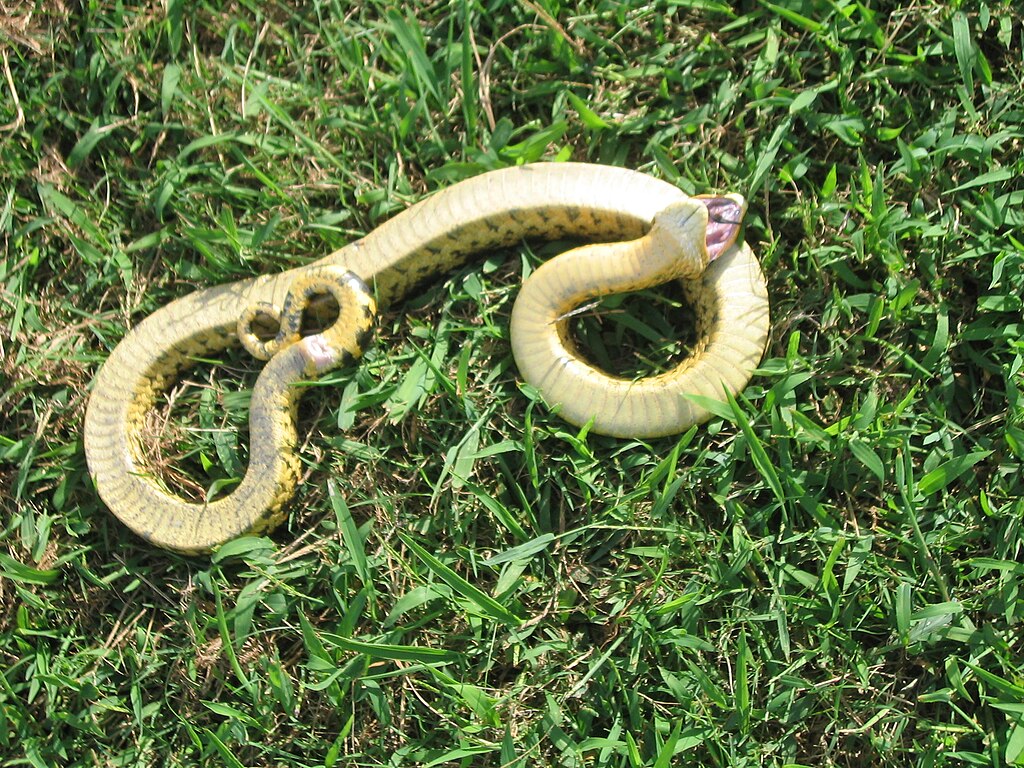When it comes to survival strategies in the animal kingdom, some methods are more dramatic than others. While many creatures rely on speed, strength, or camouflage to avoid predators, certain snake species employ a particularly theatrical approach: playing dead. This behaviour, known scientifically as thanatosis or death-feigning, represents one of the fascinating defensive strategies used by non-venomous snakes around the world. Unlike their venomous counterparts that can rely on their toxic bite as protection, these serpents must resort to elaborate performances to convince would-be predators that they’re already deceased—and therefore not worth pursuing. This article explores the remarkable world of death-feigning in non-venomous snakes, examining why and how they perform this convincing deception.
The Evolutionary Advantage of Playing Dead
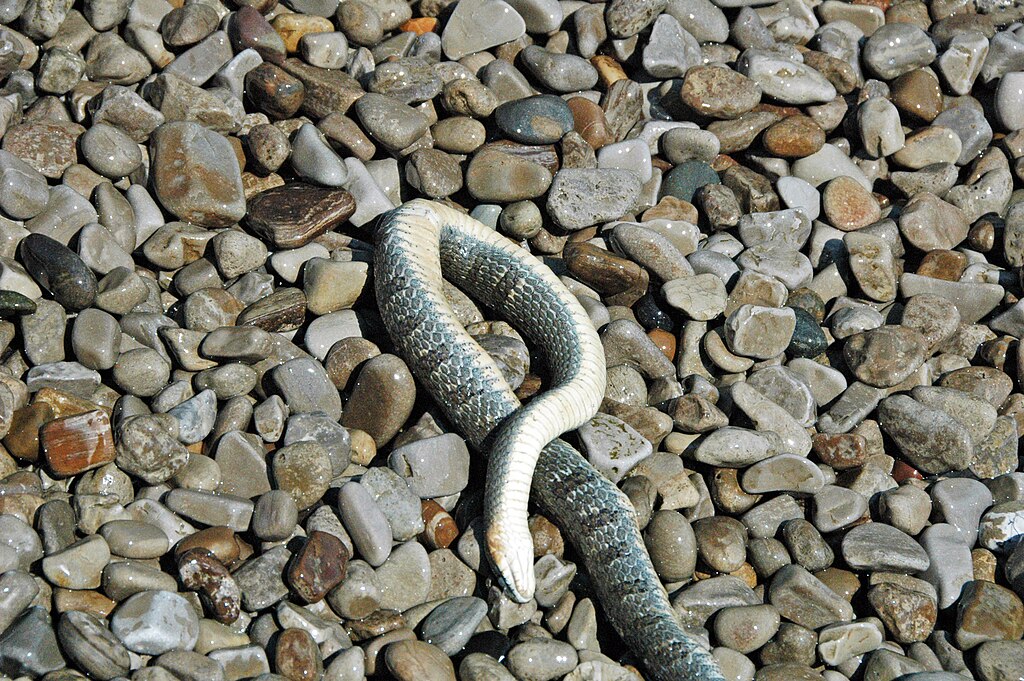
Death-feigning has evolved as an effective survival strategy in numerous non-venomous snake species because many predators are specifically programmed to pursue moving, living prey. When a snake goes limp, rolls onto its back, and appears lifeless, it essentially removes itself from a predator’s menu of desirable targets. This behavior likely developed through natural selection, as snakes that successfully fooled predators survived to pass on their genes, while those with less convincing performances did not. Research suggests that this strategy is particularly effective against predators that hunt by movement detection or those that avoid scavenging dead animals. The evolutionary investment in such an elaborate behavioral adaptation highlights just how successful it has been for these reptiles over millions of years of development.
The Hognose Snake: Master of the Death Act

When discussing death-feigning in snakes, the Eastern Hognose Snake (Heterodon platirhinos) deserves special recognition as perhaps the most dramatic performer in the reptile world. When threatened, this North American species first tries intimidation by flattening its neck, hissing loudly, and sometimes striking with a closed mouth. If these tactics fail, the hognose executes its signature move: it convulses dramatically, rolls onto its back, opens its mouth, lets its tongue hang out limply, and may even release a foul-smelling musk from its cloaca to enhance the illusion of decomposition. The performance is so convincing that the hognose has earned nicknames like “drama queen” and “fainting snake” among herpetologists. Most remarkably, a committed hognose will repeatedly flip itself onto its back if turned right-side up by a curious human, seemingly insisting on maintaining its upside-down “dead” position.
The Physiological Process Behind Death-Feigning

The act of playing dead isn’t merely behavioral—it involves significant physiological changes within the snake’s body. When entering a thanatotic state, a snake’s heart rate typically decreases dramatically, and its breathing becomes shallow and almost imperceptible. Blood flow patterns change, muscles relax completely, and in some species, bodily functions temporarily shut down to create a more convincing appearance of death. These physiological responses are controlled by the snake’s autonomic nervous system and appear to be semi-involuntary, triggered by intense fear or stress. Scientists studying this phenomenon have recorded measurable changes in stress hormones during these episodes, suggesting that the death-feigning response operates on both conscious and unconscious levels. Some researchers believe this state may even induce a form of self-hypnosis in the snake, allowing it to remain motionless for extended periods despite the presence of danger.
Why Non-Venomous Snakes Rely on This Strategy
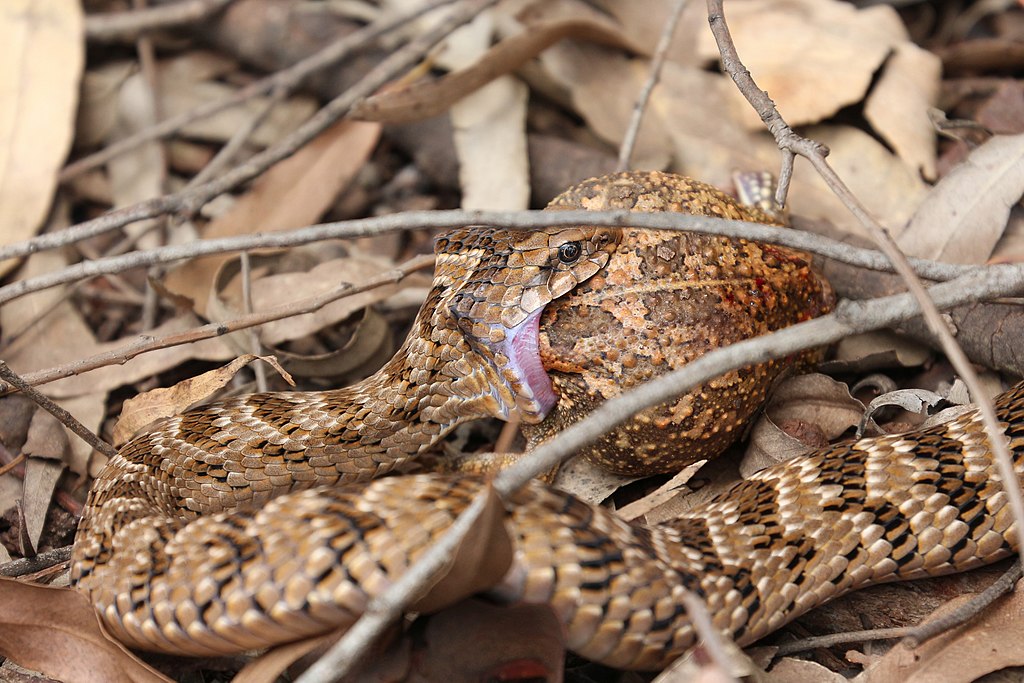
Non-venomous snakes face a significant defensive disadvantage compared to their venomous relatives, which can deter predators with potentially deadly bites. Without venom as a weapon, species like rat snakes, garter sACnakes, and kingsnakes must rely on alternative strategies for survival when escape isn’t possible. Death-feigning represents an effective “last resort” defense when faster options like fleeing or hiding have failed. For smaller or slower snake species particularly vulnerable to predation, perfecting the art of playing dead can mean the difference between survival and becoming a meal. The strategy proves especially valuable in open habitats where hiding places are scarce or during vulnerable periods like after feeding when a snake’s mobility is compromised by a recent meal. This behavioral adaptation exemplifies how natural selection can produce elaborate solutions to survival challenges in the absence of physical defensive features.
The Complex Sequence of Death-Feigning Behavior

Death-feigning isn’t a simple one-step process but rather a carefully orchestrated sequence of behaviors that create a convincing illusion. The typical sequence begins with the snake assessing the threat and attempting primary defense mechanisms like fleeing or threat displays. If these fail, the snake then initiates the death-feigning sequence: it typically contorts its body, often rolling onto its back to expose its belly (a position living snakes rarely adopt voluntarily), and lets its mouth gape open with its tongue hanging out limply. Many species will also void their cloaca, releasing waste and a musky secretion that mimics the smell of decomposition. Throughout this performance, the snake maintains an unnatural rigidity or limpness, depending on the species, and may even allow itself to be roughly handled without breaking character. This elaborate choreography can last from a few minutes to several hours, depending on the perceived threat level and the specific species.
Species Variations in Death-Feigning Techniques

While the hognose snake may be the most famous death-feigning performer, numerous other non-venomous snake species employ variations of this strategy with their own unique twists. The North American Grass Snake often rolls onto its back and releases a garlic-like odor from specialized glands. Certain Garter Snake species combine playing dead with regurgitating recently consumed prey, creating a more convincing illusion of decomposition. The African Egg-eating Snake (Dasypeltis species) has perfected a rigid form of death-feigning where its body becomes completely stiff rather than limp. Ring-necked Snakes often curl their tails to display their brightly colored undersides while playing dead, a strategy that may combine death-feigning with aposematic (warning) coloration. These variations demonstrate how different environmental pressures and predator types have shaped the evolution of thanatosis across diverse snake lineages, resulting in specialized performances tailored to each species’ particular survival needs.
Triggers and Duration of Death-Feigning Episodes
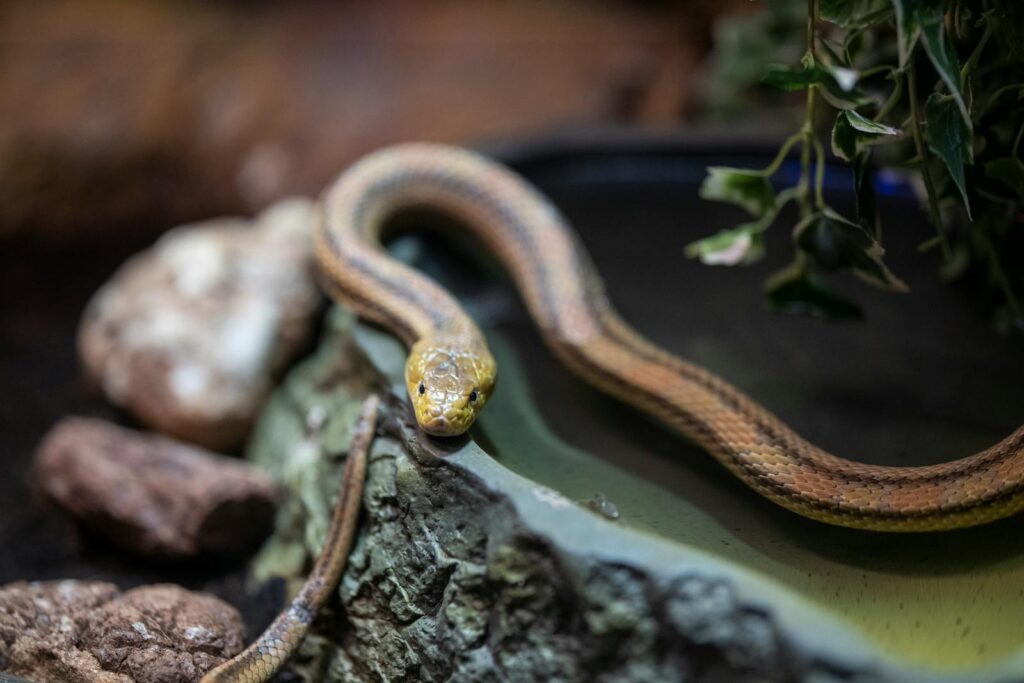
What exactly causes a snake to initiate its death-feigning behavior varies by species and circumstances, but researchers have identified several common triggers. Direct physical contact or restraint is the most reliable trigger, with many species beginning their performance only after being physically handled or captured. Some snakes respond to persistent visual threats that come within a specific proximity threshold, while others appear to be triggered by certain movement patterns that resemble predator approaches. The duration of death-feigning episodes shows remarkable variation, with some snakes maintaining their act for just a few minutes while others have been documented remaining “dead” for several hours. Studies indicate that the duration typically correlates with the perceived threat level, with snakes remaining in their thanatotic state longer when the threat stimulus persists. Once the snake perceives the danger has passed, it will gradually “revive,” often first testing its surroundings with subtle tongue flicks before fully abandoning its death pose.
The Role of Learning and Individual Variation
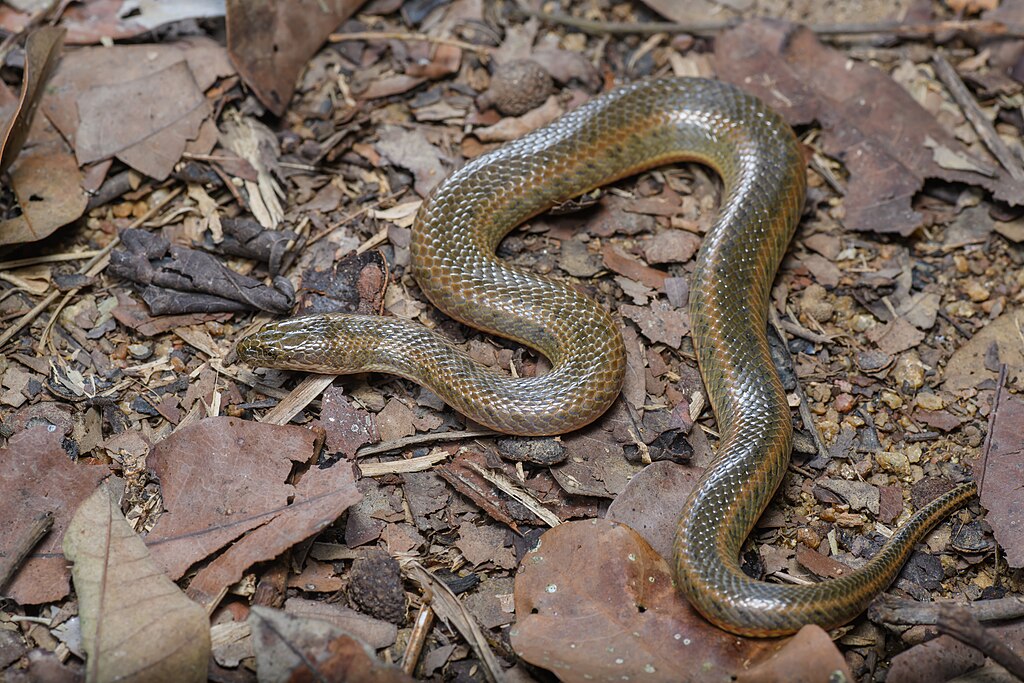
Research into death-feigning behavior has revealed fascinating insights into snake cognition and individual behavioral differences. Studies suggest that while the basic thanatosis response appears to be innate, individual snakes can refine their performances through experience. Snakes that have successfully avoided predation through death-feigning may develop more elaborate or convincing performances over time. Significant individual variation exists even within the same species, with some individuals consistently relying on death-feigning as their primary defense while others of the same species rarely employ the strategy. This variation may be partially genetic, with certain bloodlines showing stronger tendencies toward thanatotic behavior. Herpetologists have documented cases where captive-bred snakes from death-feigning parents were more likely to exhibit the behavior themselves, suggesting a heritable component to this defensive strategy that goes beyond simple learned behavior.
Effectiveness Against Different Predator Types

The effectiveness of death-feigning varies significantly depending on the type of predator a snake encounters. Against mammalian predators like foxes, coyotes, and domestic cats, which often rely on movement to trigger their hunting response, playing dead can be remarkably effective. Many mammals also avoid consuming carrion that they didn’t personally kill, making a convincing death performance particularly valuable. Against birds of prey, the strategy shows mixed results—some raptors avoid dead-seeming prey, while others will readily consume apparently deceased snakes. The strategy appears least effective against reptilian predators like kingsnakes and larger lizards, which regularly consume dead prey and rely more on chemical cues than visual ones to assess potential meals. This variation in effectiveness has likely contributed to the complex decision-making processes snakes use when choosing which defensive strategy to employ, with many species capable of assessing predator type before deciding whether death-feigning is their best option.
Death-Feigning in Juvenile Snakes
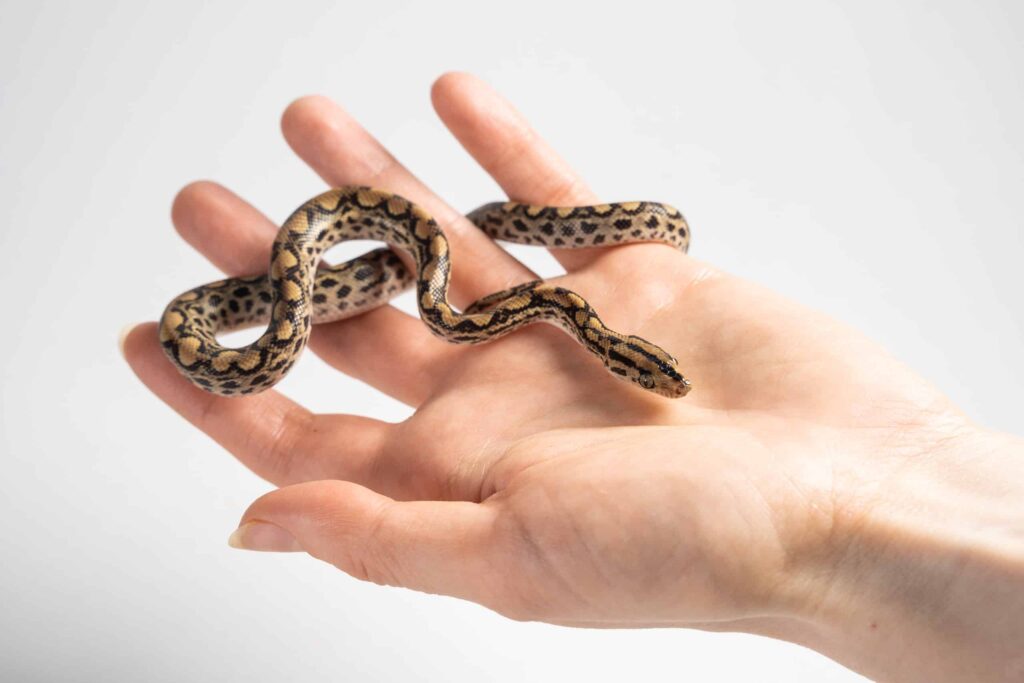
Juvenile non-venomous snakes often show more pronounced death-feigning behaviors than their adult counterparts, reflecting their increased vulnerability to predation. Young snakes, with their smaller size and inexperience, face a broader range of potential predators and fewer defensive options, making thanatosis an especially valuable survival strategy. Herpetologists have observed that in many species, juveniles will resort to playing dead more quickly and maintain the pose for longer periods than adults of the same species. The death performances of juvenile snakes also tend to be more elaborate, involving more dramatic contortions and more copious production of defensive musk. This age-based difference in defensive strategy suggests an evolutionary adaptation specifically designed to protect vulnerable young snakes during their most dangerous life stage, when their small size makes them attractive prey to a wide variety of predators that adults might more easily evade or intimidate.
Human Encounters with Death-Feigning Snakes

When humans encounter a snake exhibiting death-feigning behavior, misunderstandings often occur that can harm conservation efforts for these beneficial reptiles. Many people mistake the dramatic displays of species like hognose snakes for aggression or illness, sometimes leading to unnecessary killing of these harmless creatures. Wildlife educators frequently use the fascinating behavior of death-feigning to generate interest and empathy for snakes, showcasing the behavior as an example of the remarkable adaptations these animals have developed. Conservation biologists recommend that if you encounter a snake appearing to be dead, it’s best to simply leave it alone and move away, allowing the animal to recover from its stress response naturally. The snake’s theatrical performance serves as a powerful reminder of the complex behaviors that have evolved in wildlife to navigate a world full of threats—including those posed by humans who often misunderstand these remarkable survival strategies.
Scientific Research and Remaining Mysteries

Despite its dramatic nature, death-feigning in snakes remains underrepresented in scientific literature, with many aspects of the behavior still poorly understood. Researchers continue to investigate questions about the neurological mechanisms controlling thanatosis, including whether the behavior is entirely instinctual or involves conscious decision-making by the snake. The genetic basis for death-feigning tendencies represents another active area of research, with breeding studies attempting to determine heritability patterns of this behavior. Scientists are also exploring potential connections between death-feigning and other defensive strategies, as many species appear to follow a hierarchical decision tree when responding to threats. Modern research techniques, including neuroimaging and genetic analysis, promise to reveal new insights into this ancient behavioral adaptation in coming years. As with many aspects of reptile behavior, our understanding continues to evolve, challenging long-held assumptions about the cognitive capabilities of these remarkable animals.
Conservation Implications of Death-Feigning Behavior
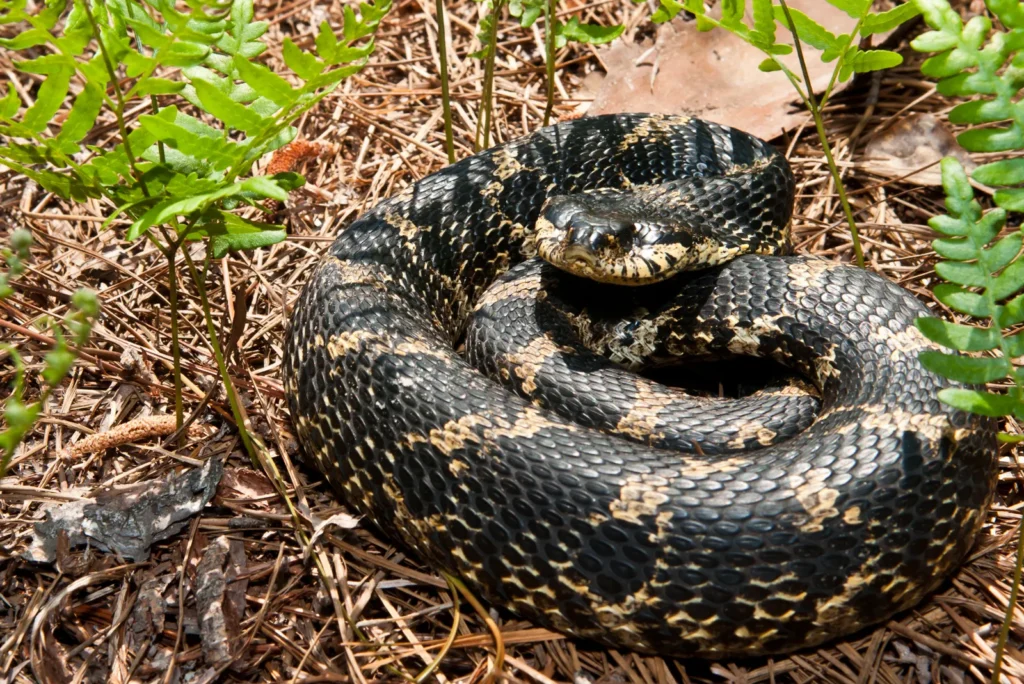
The dramatic death-feigning behavior of non-venomous snakes has significant implications for conservation efforts aimed at protecting these often-misunderstood reptiles. Species that frequently employ thanatosis, like hognose snakes, face unique vulnerability to road mortality, as their instinctive response to threat may cause them to play dead rather than flee from approaching vehicles. Conservation biologists have noted that habitats fragmented by roads can become population sinks for death-feigning species, necessitating specialized conservation approaches like wildlife underpasses specifically designed with reptile behavior in mind. The behavior can also complicate population surveys, as researchers may mistake death-feigning individuals for actual mortalities if they’re not familiar with the species’ defensive repertoire. On a more positive note, the fascinating and often endearing nature of death-feigning displays has made species like the Eastern Hognose effective “ambassador animals” for snake conservation, helping to transform public perception of snakes from fear to fascination through educational programs that showcase this remarkable behavior.
The theatrical performance of death-feigning in non-venomous snakes represents one of nature’s most remarkable defensive adaptations. From the dramatic convulsions of the hognose snake to the subtle variations employed by different species worldwide, this behavior showcases the incredible diversity of solutions that evolution has produced to solve the universal challenge of survival. For these reptiles, lacking the venomous defenses of their more notorious relatives, the ability to convincingly play dead has provided a successful evolutionary strategy that continues to fascinate both scientists and nature enthusiasts. As we continue to study these remarkable performances, we gain not only greater scientific understanding of reptile behavior but also a deeper appreciation for the complex adaptations that allow wildlife to navigate a world full of threats. The next time you encounter a snake appearing lifeless on its back, remember—you might just be witnessing one of nature’s most accomplished actors in the middle of a performance millions of years in the making.

